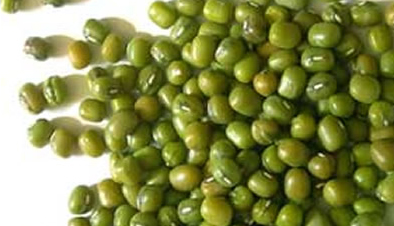
Green Moong Beans
| Botanical Name : | Vigna radiata |
| English Name : | Green Moong Beans |
| Hindi Name : | Moong Dal |
| Family Name : | Fabaceae |
Cultivation
Cultivation:- Mayanmar, Afghanistan, Uzbekistan, Thiland, Indoneisa, Australia, Kenya, Mozambique, Ethopia.
Green Moong Beans comes in Pulses, also are one of the best plant-based sources of protein.
Therefore, they’re rich in essential amino acids, antioxidants, and nutrients that may help reduce blood pressure, LDL cholesterol levels, and heart disease risk.
Also, Mung beans (Vigna radiata) are small, green beans that belong to the legume family.
The iron content of moong dal helps reduce anaemia risk.
Besides, Incorporating organic moong dal into your daily diet strengthens your immune system and lowers your risk of developing diseases.
Mung beans are delicious, versatile and easy to add to your diet. They can be used in place of most other beans in dishes like curries, salads and soups.
Also, These beans have a slightly sweet taste and are often made into a paste in Asian desserts.
Varieties
Machine Clean and FD Quality
Polished & Un Polished
Nutrition Value
Carbohydrates,
Sugars,
Dietary fiber,
Fat,
Protein,
Vitamin C,
Calcium,
Magnesium,
Phosphorus,
Potassium,
Sodium
Usage
Used for making dhal’s, soups, papadams and for sprouts.
Although, green moong bean has been consumed as a diet worldwide and plays a vital role in human nutrition,
Especially as a good source of protein (20.97–32.6%) and active compounds.
Moong beans are good because they supply protein and fiber and they protect the liver and you can eat them daily.
Also, Moong beans are popular as fresh salads and cooked as lentils or soup in India, China, and Southeast Asia.
Moong beans are rich in proteins, vitamins, minerals, fiber, oligosaccharides, and polyphenols.
Packing
25 kgs, 50 kgs.
